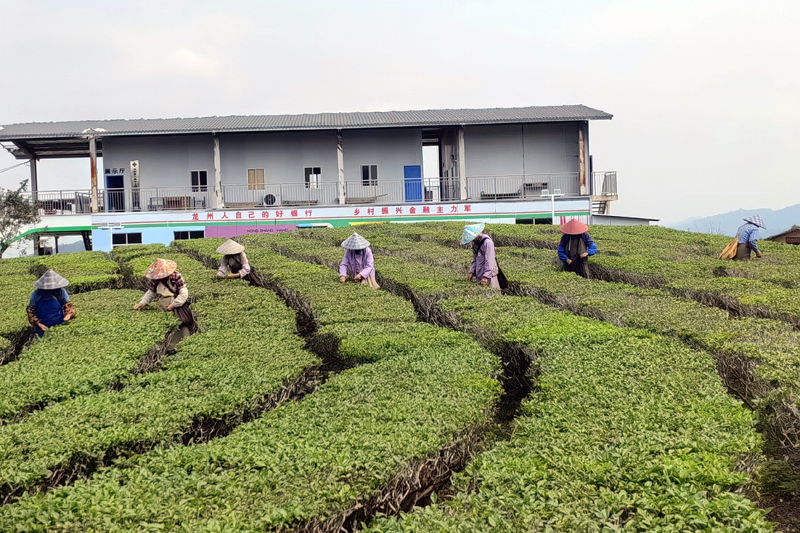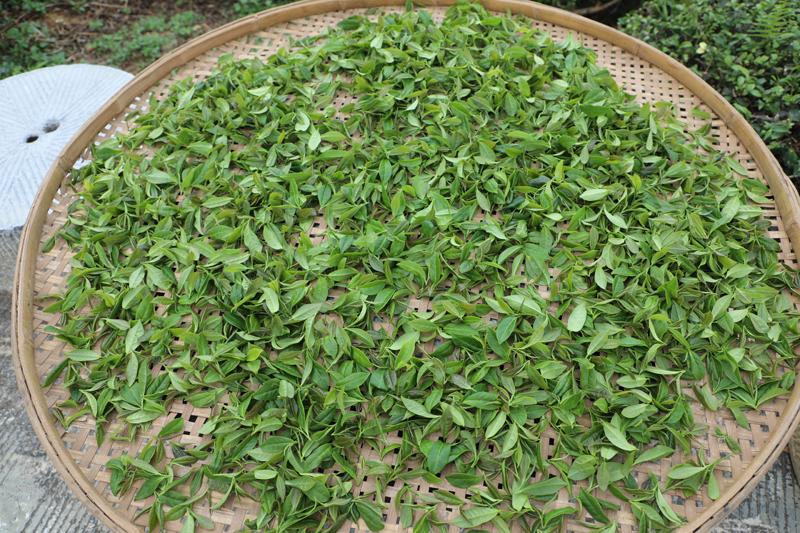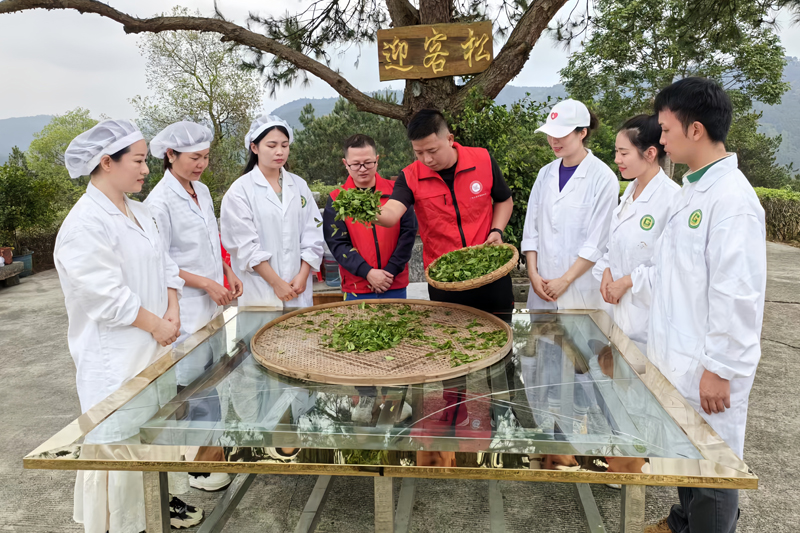Farmers harvest spring tea leaves in China's Guangxi
Farmers have recently been harvesting spring tea leaves at an eco-friendly tea plantation in Bajiao township, Longzhou county, south China's Guangxi Zhuang Autonomous Region.
The tea plantation, nestled deep in the mountains, produces quality spring tea which customers favor.

Farmers pick spring tea leaves at an eco-friendly tea plantation in Bajiao township, Longzhou county, south China's Guangxi Zhuang Autonomous Region. (Photo/Huang Huajiang)
Farmers have begun to pick spring tea leaves on the day of “Lichun,” or the Beginning of Spring, which is the first of the 24 solar terms on the Chinese lunar calendar, and falls on Feb. 4 this year, according to Chen Xiangqing, an executive of the tea plantation.
The harvest period of spring tea leaves at the tea plantation will last until the Qingming Festival, or Tomb-Sweeping Day, on April 4. It is estimated that the output of dried spring tea leaves of the tea plantation will reach 500 kilograms, and dried spring tea leaves will be priced at around 760 yuan ($105) per kilogram.

A farmer shows freshly harvested spring tea leaves at an eco-friendly tea plantation in Bajiao township, Longzhou county, south China's Guangxi Zhuang Autonomous Region. (Photo/Liang Yanyun)
"I'm a native of Bajiao township. I come to pick tea leaves here every day during the peak season of harvesting and can earn over 100 yuan a day," said a woman surnamed Huang, who comes from a village near the tea plantation.
By inviting nearby villagers to pick tea leaves, the tea plantation helps villagers find jobs near their homes, contributing to rural revitalization.

Spring tea leaves are withered at an eco-friendly tea plantation in Bajiao township, Longzhou county, south China's Guangxi Zhuang Autonomous Region. (Photo/Liang Yanyun)
Workers have also been busy processing tea leaves at the tea plantation's workshop. The tea processing involves various steps, such as withering, stir fixation, and rolling.
To increase the production of spring tea leaves and raise the farmers' incomes, experts from the Guangxi South Subtropical Agricultural Science Research Institute offer technical guidance to tea farmers and firms.

A worker fries spring tea leaves at an eco-friendly tea plantation in Bajiao township, Longzhou county, south China's Guangxi Zhuang Autonomous Region. (Photo/Huang Huajiang)
"We often provide technical guidance on tea plantation management and the processing of various types of tea to tea companies, applying our research achievements to tea processing to help them make more profits," said Li Ziping, an expert from the institute.

A worker rolls spring tea leaves at an eco-friendly tea plantation in Bajiao township, Longzhou county, south China's Guangxi Zhuang Autonomous Region. (Photo/Huang Huajiang)

An expert shows how to process spring tea leaves at an eco-friendly tea plantation in Bajiao township, Longzhou county, south China's Guangxi Zhuang Autonomous Region. (Photo/Huang Huajiang)
Photos
Related Stories
- Chinese herbal tea brand seeks to expand int'l market share
- In pics: Picturesque misty scenery of tea gardens in SW China's Yunnan
- Farmers collect tea leaves in Wuzhishan, China's Hainan
- Tea plantation revitalizes SW China coal town
- Chinese new-style tea brewing global appeal via overseas expansion
- Tea from Xiaogan, C China's Hubei enjoys popularity along Belt and Road
Copyright © 2024 People's Daily Online. All Rights Reserved.









